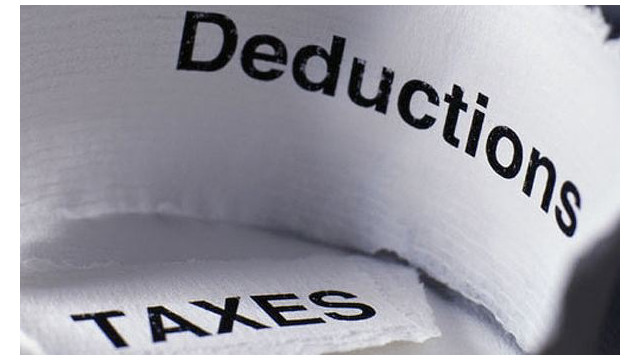Taxes
6 SECURE Act 2.0 Changes to Plan for in 2023
With the act containing upward of 100 new retirement provisions, here are six of the most notable changes taking effect this year.
Jan. 27, 2023

By Daniel F. Rahill, CPA/PFS, JD, LL.M., CGMA.
Three years after the Setting Every Community Up for Retirement Enhancement (SECURE) Act was enacted, SECURE Act 2.0 is now law, with the goal of “securing” American workers’ retirement options well into the future. With the act containing upward of 100 new retirement provisions, here are six of the most notable changes taking effect this year.
- RMD Age Increased

Thanks for reading CPA Practice Advisor!
Subscribe for free to get personalized daily content, newsletters, continuing education, podcasts, whitepapers and more...
Already registered? Login
Need more information? Read the FAQ's
Individuals saving for retirement via individual retirement accounts (IRAs) and most employer-sponsored retirement accounts must begin taking required minimum distributions (RMDs) when they hit a certain age. This age limit increases to age 73 in 2023 and age 75 in 2033. Increasing the age of when RMDs must begin benefits savers who don’t need the money for current living expenses, as it prolongs their investment timeframe, pushes out the income tax deferral on their account balances, and allows a longer window to consider and complete Roth IRA conversions.
- RMD Excise Tax Reduced
Prior law required those who failed to take their full RMD amount by the deadline to pay a tax of 50% of the amount not taken. SECURE Act 2.0 reduces this tax to 25% in 2023. The act further drops the tax to 10% of the amount not taken if account holders take the full RMD amount and report the tax by the end of the second year after it was initially due and before the IRS demands payment.
- Qualified Charitable Distribution Rules Eased
The new rule for qualified charitable distributions (QCD) from IRAs expands the types of “charities” that can receive the gift. Beginning in 2023, individuals can make a one-time gift of up to $50,000 (adjusted annually for inflation) to a charitable remainder unitrust, a charitable remainder annuity trust, or a charitable gift annuity. Previously, distributions had to go to charities with a 501(c)(3) status. However, disbursements to private foundations or donor-advised funds still aren’t allowed.
The key benefit of a QCD, which must be made from a taxable IRA by year’s end, is that it counts toward a taxpayer’s annual RMD. While no deduction materializes, the disbursement keeps an RMD from moving a donor into a higher tax bracket. Whether to a traditional charity or to a trust or gift annuity, the distribution also counts toward the $100,000 that can be gifted annually.
- Longevity Annuity Contract Limits Lifted
The act raises the ceiling for how much retirement savers can put into a qualified longevity annuity contract (QLAC), a type of deferred annuity that’s funded from a retirement account and is exempt from RMDs until distributions are taken (up to age 85), to provide a source for guaranteed income in later years. The prior limit was the lesser of 25% of the value of the qualified retirement account or $135,000. SECURE Act 2.0 eliminates the 25% limit and increases the amount that can be put into a QLAC to $200,000 (indexed for inflation).
- Roth Treatment Allowed for Matching or Non-Elective Contributions
Participants in employer-sponsored 401(k), 403(b), and 457(b) plans can now designate some or all matching contributions and non-elective contributions as Roth contributions. Previously, employer matches had to go into an employee’s pre-tax account. This applies only to the extent that a participant is fully vested in these contributions. While this provision takes effect immediately, it may take some time for employers to amend their plans to include this feature.
- Credits Increased for Small-Employer Retirement Plans
Beginning in 2023, eligible businesses with 50 or fewer employees can qualify for a credit equal to 100% of the administrative costs for establishing a workplace retirement plan. This is an increase from 50% of administrative costs up to $5,000.
Also beginning in 2023, eligible employers might be entitled to a tax credit based on their employee matching or profit-sharing contributions. This credit caps at 100% of applicable employer contributions, up to $1,000 per employee, and phases down gradually over five years: 100% in the first and second tax years, 75% in the third year, 50% in the fourth year, and 25% in the fifth year. The credit phases out for employers with 51 to 100 employees, and no credit is allowed for employer contributions on behalf of an employee who makes more than $100,000 (adjusted for inflation after 2023). This is effective for retirement plan years beginning after Dec. 31, 2022.
With SECURE Act 2.0 containing nearly 100 new retirement provisions that go into effect at different times over the coming years, there’s much left to unpack from this massive act aimed at improving the retirements and livelihoods of American workers. Retirement savers and employers alike should speak with their certified public accountants (CPAs), who can help them strategically manage their finances and maximize the tax credits and deductions available to them. The Illinois CPA Society’s free “Find a CPA” directory can help you find the trusted, strategic advisor that’s right for you based on location, types of services needed, and languages spoken. Find your CPA at www.icpas.org/findacpa.
======
Daniel F. Rahill, CPA/PFS, JD, LL.M., CGMA, is a managing director at Wintrust Wealth Management. He is also a former chair of the Illinois CPA Society Board of Directors and a current board member of the American Academy of Attorney-CPAs.
